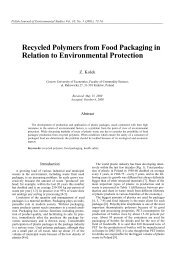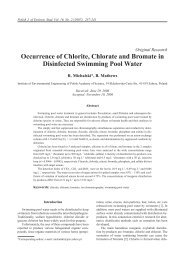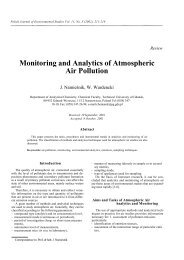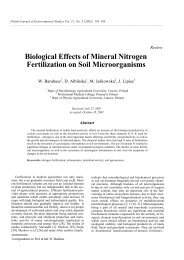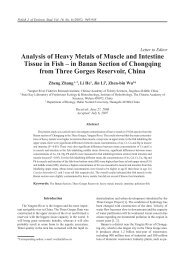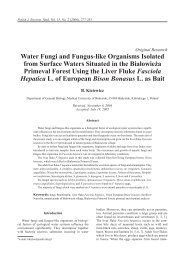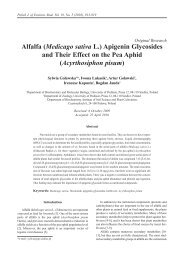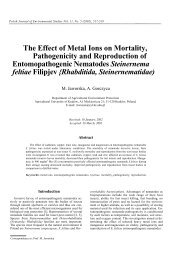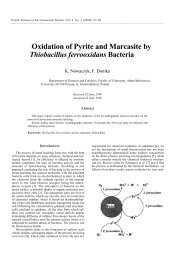Ecological Replacements of Ozone-Depleting Substances
Ecological Replacements of Ozone-Depleting Substances
Ecological Replacements of Ozone-Depleting Substances
Create successful ePaper yourself
Turn your PDF publications into a flip-book with our unique Google optimized e-Paper software.
424<br />
measurements using GC-MS show that the concentration<br />
<strong>of</strong> C 2 H 2 F 4 (HCFC-134a)-the most frequently used<br />
replacement <strong>of</strong> CFC's- has increased rapidly in the<br />
background atmosphere [41, 43, 71, 74, 75, 77, 90, 95,<br />
98, 103, 153].<br />
It is now known that accumulation rates <strong>of</strong> some<br />
CFC's in the background troposphere are beginning<br />
to slow in response to reduced global emissions [10, 70,<br />
72]. Additionally, it is to be expected that concentrations<br />
<strong>of</strong> their replacement compounds (e.g. HCFC's and<br />
HFC's) will increase rapidly over the next few years<br />
[10, 70, 99].<br />
Wachowski L. et al.<br />
Legal Solutions Concerning <strong>of</strong> ODS's<br />
In response to the hypothesis presented by M. Molina<br />
and F.S. Rowland [17, 18] and growing evidence on the<br />
ozone depletion caused by ODS's, the large-scale industrial<br />
production and use <strong>of</strong> CFC's have been rapidly<br />
phased out [61-64, 156]. The first to be replaced were the<br />
Freons used as spraying agents in cosmetic aerosols, according<br />
to the resolution banning their use and production<br />
issued by the Environmental Protection Agency<br />
(EPA) in 1979. As the next step the halocarbons used in<br />
technical aerosols, plastic foams, refrigerators and<br />
Table 2. Effect <strong>of</strong> a number CFC replacements (HCFC's and HFC's) on the environment and their practical usage.<br />
1 Expressed relative to CO 2 as the reference substances, IPCC (1995) [10,70]. :<br />
2 WMO (1994), [34].<br />
3<br />
Relative to a reference value <strong>of</strong> 1,0 for CC1 3 F [97].<br />
4<br />
(a) - cooling medium; (b) - aerosol propellant; (c) - blowing agent; (d) - solvent; (e) - for fire suppression and explosive protection;<br />
(f) - cleaning agent, (g) - air conditioner; (h) - substrate for manufacture halocarbon compounds; (i) - agricultural and space fumigant,<br />
food packing, industry.<br />
* by definition [97].



